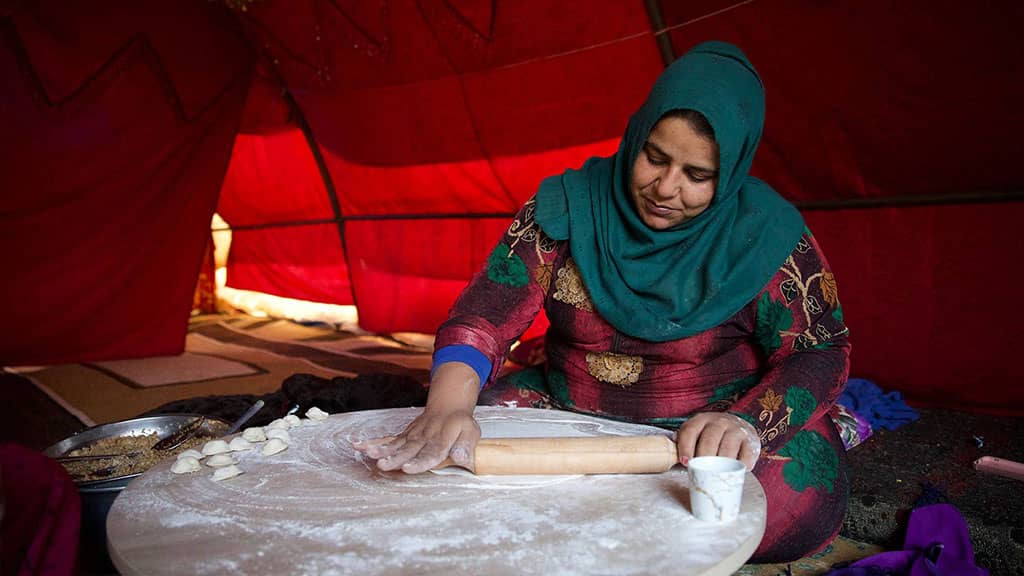
In South Asia, hunger remains serious, reflecting rising undernourishment and persistently high child undernutrition, driven by poor diet quality, economic challenges, and the increasing impacts of natural disasters.
With 281 million undernourished people, South Asia accounts for nearly 40 percent of the global total.
With 281 million undernourished people, South Asia accounts for nearly 40 percent of the global total (FAO et al. 2024a) and has the highest child wasting rate of all regions in the GHI. Poor diet quality in South Asia results in persistent undernutrition and micronutrient deficiencies, alongside rising overweight, obesity, and related noncommunicable diseases. While South Asian countries have large food-based safety net programs, these often prioritize staple grains over diverse diets, hindering long-term health improvements (IFPRI 2024).
Despite some economic growth in many South Asian countries, the benefits provided are uneven, leaving many with low wages and high unemployment. Rapid urbanization, climate change, and natural disasters further strain public and natural resources (ESCAP 2020).
The GHI scores of Afghanistan, India, and Pakistan all indicate a serious level of hunger. In Afghanistan, the food security situation has worsened as a result of conflict, economic instability, and disasters that disrupt agriculture and aid (IPC 2024d). Since 2016, the country’s GHI score has risen, driven primarily by mounting undernourishment rates, as it has seen the starkest increase in child stunting of all countries (alongside Niger). Households experiencing conflict and other shocks are being forced to resort to extreme coping strategies to deal with food shortages (Ahmadzai and Morrisey 2024).
In India, although the country’s GHI score has fallen since 2000, child wasting and stunting remain very high (see Appendix B). Child undernutrition in India goes hand in hand with the poor nutritional status of mothers (IIPS and ICF 2021), suggesting an intergenerational pattern of undernutrition and underscoring the need for attention to maternal health and nutrition and infant feeding. In Pakistan, high inflation, fiscal deficits, and frequent natural disasters exacerbate food shortages (World Bank 2024c). In 2022, extreme rainfall led to unprecedented flooding and a severe food crisis that has been attributed to climate change (Otto et al. 2023a).
Over the past two decades, Nepal has achieved one of the world’s fastest reductions in the prevalence of child stunting, though stunting remains a major public health concern. Despite facing economic and political instability, Nepal made these improvements in nutrition largely by increasing its coverage of health and nutrition services, as well as by enhancing household wealth, parental education, and sanitation. It embraced a multisectoral and multistakeholder approach through its Multi-Sectoral Nutrition Plans, which played a crucial role in these achievements (Chitekwe et al. 2022; Hanley-Cook et al. 2022).
In 2015 Nepal enshrined the right to food in its constitution, and to advance implementation of the constitutional provision it adopted the Right to Food and Food Sovereignty Act in 2018 along with a supporting regulation in 2024.